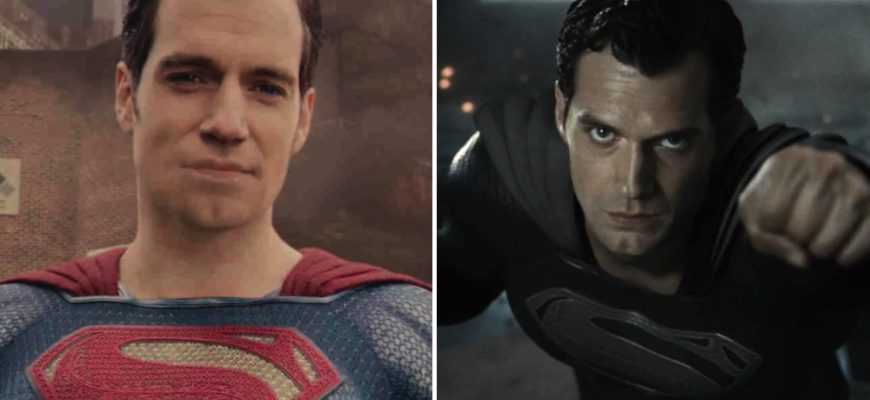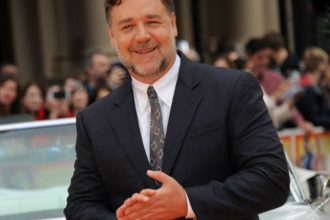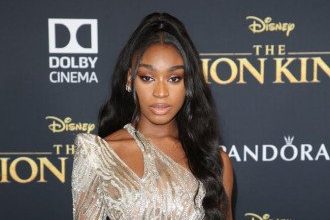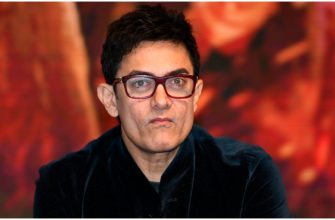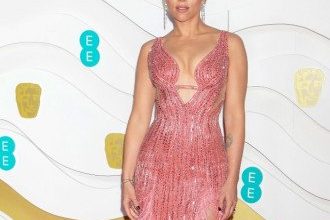SPOILER WARNING: This story discusses major plot points in both 2017’s “Justice League” and 2021’s “Zack Snyder’s Justice League.”
For years, Zack Snyder fans have been left to wonder what exactly had changed from his original vision for “Justice League” to what debuted in theaters in 2017. All anyone’s known for certain was that in May 2017, Warner Bros. announced that Snyder was leaving the film due a family tragedy, and Joss Whedon — writer-director of Marvel Studios’ beloved blockbuster “The Avengers” and less-beloved, less-blockbuster-y “Avengers: Age of Ultron” — was taking over as screenwriter and director.
Some changes were obvious. The “Justice League” reshoots occurred while a mustached Henry Cavill was in production on Paramount’s “Mission: Impossible — Fallout,” so Warner Bros. had to digitally shave Cavill’s upper lip in his new scenes, and the results were a special kind of terrible. Whedon also brought his lighter, jokier tone to the script, which sat in awkward opposition to Snyder’s more earnest and solemn approach. (There was apparently a marked difference in Whedon’s approach off camera as well: Last summer, “Justice League” star Ray Fisher alleged that Whedon engaged in “gross, abusive, unprofessional and completely unacceptable” behavior on the set of the film, allegations publicly supported by costars Jason Momoa and Gal Gadot. Whedon has never commented on the allegations.)
It wasn’t until an unrelenting campaign by Snyder’s fans forced Warner Bros. to allow Snyder to complete his version of “Justice League” that the full breadth of Whedon’s changes to the movie became clear. Now that 2017’s “Justice League” and 2021’s “Zack Snyder’s Justice League” are both available on HBO Max, subscribers can see for themselves that Whedon either cut, altered, or completely reshot practically every scene in Snyder’s original vision.
Some of these decisions appear to be practical: Snyder has said that Warner Bros. demanded “Justice League” run at two hours, while his version runs just over four hours. Other decisions, however, appear to be driven by a fundamental loss of faith in Snyder’s mythic approach to the DC Universe.
None of the changes, however, altered the core plot of “Justice League”: Both films are still about Bruce Wayne, a.k.a. Batman (Ben Affleck) recruiting a team of superheroes in order to stop an alien invasion led by Steppenwolf (Ciarán Hinds), who wants to remake the world by uniting three ancient alien devices called motherboxes that have been hidden away on Earth for millennia. In both films, Bruce first recruits Diana Prince, a.k.a. Wonder Woman (Gadot), before convincing Barry Allen, a.k.a. the Flash (Ezra Miller), Victor Stone, a.k.a. Cyborg (Fisher), and Arthur Curry, a.k.a. Aquaman (Momoa) to join them. After a battle with Steppenwolf underneath Gotham City harbor leaves the team reeling, they use the last motherbox to resurrect the body of Clark Kent, a.k.a. Superman (Cavill), and then battle Steppenwolf inside an abandoned nuclear powerplant in the abandoned wilds of Russia.
While the story may be the same, how these films tell it is often radically different. Here are the biggest and most telling differences between Whedon’s “Justice League” and “Zack Snyder’s Justice League.”
What’s Gone: Whedon’s New Scenes, Including a Critical Turning Point
Throughout the 2017 “Justice League,” Whedon wrote several brand new scenes that, for obvious reasons, are not included in the Snyder Cut. Most of these scenes involve Affleck’s Bruce Wayne, including a new opening with Batman on a Gotham rooftop using the fear of a random burglar to lure and capture a parademon — Steppenwolf’s flying henchmen. How Batman first learned about parademons, and that they can sense fear, is never explained — one of many storytelling logic leaps made in Whedon’s version that Snyder’s assiduously avoids.
A couple of the new scenes are more driven by character, like an exchange before the third act between Bruce and Diana about the pressures of leadership and heroism. Most of them, however — especially the ones between Bruce and Alfred (Jeremy Irons), or with the Justice League inside the Batcave — are expositional in nature, compressing the plot or short-handing a character’s backstory. The latter is best typified by Victor telling Barry that he became Cyborg due to an “explosion” — an explanation that begs for more detail that never comes.
In all of these scenes, Whedon’s dialogue leans on the idea that these characters are at their center recognizably human and flawed — i.e. the Marvel Comics approach to superhero storytelling. This is directly at odds with Snyder’s conviction that what sets the DC superheroes apart is that they are gods among humans, driven by higher ideals.
This is no better demonstrated than in the critical scene in which Bruce, Diana, Barry, Victor, and Arthur decide to use the motherbox to bring Clark back to life. This scene also exists in the Snyder cut, but Whedon re-wrote and re-shot it completely to make the discussion into an argument, between Bruce (who believes Clark needs to be resurrected, ethics be damned) and Diana (who believes meddling with death is a bad idea). That argument turns personal when Diana evokes Bruce’s guilt at Clark’s death, and Bruce mentions Diana’s long dead love Steve Trevor — basically because, as Victor puts it, he’s “an asshole.”
The contentious nature of the scene evokes a similar sequence in Whedon’s “The Avengers,” when the MCU superheroes devolve into a lengthy argument about their purpose and motivations. But the kind of interpersonal squabbling that feels right in a Marvel movie doesn’t really work in “Justice League.” In Snyder’s version, the heroes’ big concern is that awakening the motherbox to resurrect Superman will allow Steppenwolf and the parademons to find it and use it to remake the world; the tension isn’t in a fight over the ethics of resurrecting a single dead hero, but in deciding to risk bringing about armageddon. You know, god stuff.
Perhaps the most pointed addition Whedon made to “Justice League” was creating a Russian family terrorized by the parademons as Steppenwolf builds out his lair. Through the final act of the film, the Flash and later Superman are preoccupied with saving these civilians, a knowing critique of Snyder’s “Man of Steel,” in which Superman battles General Zod throughout Metropolis without consideration for the thousands of civilians dying in the rubble beneath them.
There are no Russian civilians in the Snyder cut.

Screenshot Courtesy of HBO Max
What’s Changed: Almost Everything, Especially the Length and the Violence
As noted earlier, practically all the scenes from Snyder’s “Justice League” that Whedon kept in the 2017 version were changed in some way. Often, it was to make the scenes shorter. The best example is the sequence set on Diana’s home of Themyscira, when Steppenwolf arrives with his parademons to obtain the motherbox kept in a vault there.
In Whedon’s version, the sequence — Steppenwolf’s arrival; Queen Hippolyta (Connie Nielsen) taking the motherbox and sealing Steppenwolf inside the vault; Steppenwolf breaking free and beating back the Amazons as they try to keep the box from him; Steppenwolf succeeding and teleporting away — starts roughly 22 minutes into the movie, and lasts for about 5 minutes total.
In the Snyder cut, the sequence starts at almost the same point in the movie, at the 25 minute mark. But it runs more than twice as long, for roughly 11 and a half minutes.
So what got cut? In a word: Heart. When Steppenwolf first arrives, Snyder shows Amazons reacting with concern and resolve across Themyscira. When he declares, “I will bathe in your fear,” Hippolyta yells, “Daughters of Themyscira, show him your fear,” to which the Amazons bellow, “We have no fear!”
As the battle progresses, Snyder is at pains to register the deaths of the Amazons as they fall. When the vault is sealed, rather than Steppenwolf easily breaking through the door, Hippolyta watches the entire structure collapse into the ocean, and Snyder’s camera lingers on her anguish at the deaths of all the warriors inside. Their sacrifice makes Steppenwolf’s escape from the ocean that much more impactful and shocking.
Steppenwolf’s attack on the fields of Themyscira also is more brutal in the Snyder cut, another striking difference between the two versions. Whedon’s “Justice League,” like almost every theatrically released superhero movie, is rated PG-13, which means its violence is largely bloodless. The Snyder cut, however, is rated R, which means the violence is much, much bloodier.
When Wonder Woman stops a crew of nihilistic terrorists from blowing up a bunch of schoolkids in London, in both versions, she bursts into the room and throws the terrorists against the wall. In Whedon’s version, this fight is over in a few seconds, and the camera cuts away before we see any of the terrorists actually hit a wall. In the Snyder cut, however, not only do we see multiple terrorists make impact, some of them head first, we also see the blood splatter left behind once they slump lifeless to the floor.
(Whedon also cut the coda to this scene, with Wonder Woman checking on the school kids. She sees one girl, huddled on the ground. “Can I be like you some day?” the girl asks. “You can be anything you want to be,” Diana answers.)
The violence in the Snyder cut carries through to the ending, after Superman joins the battle and begins kicking the living crap out of Steppenwolf. In Whedon’s version, Superman and Wonder Woman team up to destroy Steppenwolf’s giant axe; when Steppenwolf reacts with fear, the parademons swarm and begin to devour him, and he teleports away — his ultimate fate unknown.
Snyder takes a more definitive approach: Superman beats Steppenwolf so badly that he breaks off one of his horns, then Aquaman impales him on his trident, then Wonder Woman slices off his head and sends it back through the open portal to his home planet of Apokolips, where it lands at the foot of Steppenwolf’s leader, Darkseid.

Courtesy HBO Max
What’s New: Backstories, Motivations, Costumes, Aspect Ratios, Epilogues, and Darkseid — Oh My!
Darkseid! Bent on total control of the universe, Darkseid has loomed so large for so long in the DC universe that he directly inspired his Marvel Comics counterpart, Thanos. But other than Steppenwolf saying “for Darkseid” off-camera, the character is missing entirely from Whedon’s “Justice League.”
Putting Darkseid back in “Justice League” is one of many major elements Snyder restored to his version of the movie. In Whedon’s film, Steppenwolf is the one who leads an army to conquer Earth with the motherboxes, only to be repelled by an army of Atlanteans, Amazons, humans, Greek gods, and Green Lanterns; in the Snyder cut, it’s Darkseid. Back, too, is Darkseid’s fixation on finding the “anti-life equation” — a formula that allows whoever wields it to hold total control over the minds of all sentient life. There’s no mention of “anti-life” in Whedon’s “Justice League,” but in the Snyder cut, Steppenwolf rejoices at realizing that it’s on Earth.
That realization gets at one of the best parts of the Snyder Cut: The motivations for all the characters are so much clearer. In Whedon’s version, Steppenwolf is bent on conquest because that’s what evil characters do in these movies. In the Snyder cut, he’s been cast out of Apokolips for defying Darkseid, and he sees conquering Earth as his best chance at redemption.
The Snyder cut also does a much better job of explaining what the motherboxes actually are, and why all of a sudden Steppenwolf is keen on them: “Zack Snyder’s Justice League” opens with the death of Superman in “Batman v Superman: Dawn of Justice,” and as we see Clark’s death rattle echo throughout the planet, we witness each of the three motherboxes jolt to life.
But that doesn’t mean Steppenwolf has an easy time finding them. Unlike in Whedon’s film — where Steppenwolf just seems to know where the Atlantean motherbox is — Snyder spends time tracking Steppenwolf’s hunt to to find it, including using a creepy, spider-y mind-reading tech on kidnapped Atlantean soldiers. Steppenwolf is putting in the work, which makes his drive much more compelling.
The biggest additions to the Snyder cut, however, involve the backstories for Miller’s Barry Allen and Fisher’s Victor Stone. They were cut whole cloth from Whedon’s version, which introduces each character and their abilities early on and then mostly takes them as a given. One of the most entertaining sequences in the Snyder cut is Barry’s first major scene in Central City, in which he witnesses Iris West (Kiersey Clemons) get into a car accident as he’s applying for a job at a doggy daycare facility, and he literally bursts out of his shoes to save her.
Victor, meanwhile, is practically a different character in the Snyder cut. In a flashback, we see his mother, Elinore (Karen Bryson), defend him for hacking into the Gotham University’s computer system to help classmate whose family had lost their home. And remember that “explosion” that begged for more detail? In Snyder’s film, it’s a car wreck, as Victor and Elinore drive home from a winning football game that Victor’s father Silas (Joe Morton) missed again.

Courtesy of HBO Max
Rather than dive into his abilities as he does in Whedon’s version, Victor explores them with trepidation in the Snyder cut, blinded by the fury he feels for his father. It’s only after Silas leaves a recording in which he outlines what Victor can do now as Cyborg that we get the full sense of Snyder’s ambition for the character: He’s the “absolute master” of the digital world who can control everything from the global economy to the world’s nuclear arsenal at will. In other words, Victor is the God of Technology, who has to choose to use his limitless abilities for good. We see him do so with a single mother (C. Amanda Maud), who’s punishing financial struggles Victor alleviates by placing $100,000 into her bank account.
Barry’s abilities are also much more robust in the Snyder Cut. To prevent the motherboxes from uniting, Victor needs to be blasted literally inside them, which Barry is only able to do by building up a massive electrical charge with his speed. But he falls and fails, the motherboxes unite, and the world begins to end — at which point, Barry runs so fast that he begins to run backwards in time.
Some of these cuts were necessary to meet Warner Bros.’s mandate for a two hour runtime. (The final battle in the Snyder cut doesn’t occur until just after the three hour mark.) But it’s also clear that Whedon and his collaborators believed the “Justice League” heroes were just too powerful — that watching gods be godlike was inherently less interesting. Snyder clearly disagrees.
There are dozens, if not hundreds, of other changes between the two “Justice League” movies, both big and small. Snyder uses the boxy — and IMAX-friendly — 1.33:1 aspect ratio to give his characters more vertical stature. When Superman returns, we see him choose a new costume — a black suit — from a suite of options. We meet Silas’ S.T.A.R. Labs colleague Ryan Choi (Zheng Kai), who in the comics becomes the superhero Atom. And Willem Dafoe shows up as Arthur’s Atlantean mentor Vulko, meant to tease his later appearance in 2018’s “Aquaman.”
Lois Lane (Amy Adams) is housebound and overcome with grief in the Snyder cut; when Martha Kent (Diane Lane) visits to tell her to find her way back to the living, we learn that, in fact, Martha is really the shapeshifting DC superhero known as Martian Manhunter, whose been hiding in plain sight as the military official Calvin Swanwick (Harry Lennix) in “Man of Steel” and “Batman v Superman.” When Lois does decide to return to the world, Snyder’s camera curiously lingers on a pregnancy test — we never learn the result.
And, of course, there’s the epilogue, which Snyder shot last year mainly so Affleck’s Batman and Jared Leto’s Joker would be able to share a scene together. The scene, set within a post-apocalyptic “Knightmare” world in which Superman has succumbed to anti-life, was meant by Snyder to indicate where he planned to take the “Justice League” saga in two subsequent movies.
Those films almost certainly will never come to pass; Snyder said as much to Variety. But it’s also clear that Snyder’s original vision for “Justice League” should have been able to stand on its own from the start — perhaps not at four hours, but also definitely not at two. Had Warner Bros. kept faith with Snyder, the studio could not only have avoided years of bad press, but enjoyed the benefits of a filmmaker’s vision seen to completion. We’ll never know what that could have looked like, but at least now we know what Snyder intended.
Смотрите также:
- Utopia Media заявила о правах Северной Америки на хит «Эль-Планета» (ЭКСКЛЮЗИВ)
- 90-дневный жених: Майкл Джессен опубликовал длинноволосую молодую девушку с Джулианой на старом фото
- Netflix доминирует в номинациях на Оскар 2021 года, Disney Plus и Apple получают первые награды
- Братья Канделл, сценаристы и продюсеры «Моана», «Дрейф» подписали контракт с партнерами Range Media (ЭКСКЛЮЗИВ)
- Пандемический триллер «Lockdown» открывает студию для AMM Global Asia Television (ЭКСКЛЮЗИВ)
- Кольцо снов | Фильм Угроза
- Перед тем, как Лайза Минелли получила «Оскар», она серьезно отнеслась к фильмам «Стерильная кукушка» и «Джуни Мун»

